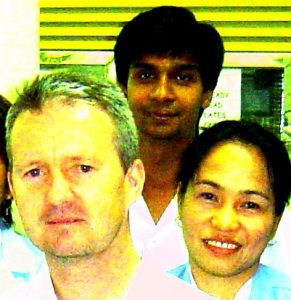by Lindajoy Fenley
Ethnic minority organizations are vowing to do everything possible to encourage an accurate census count in the face of what they called a Trump Administration plan to solidify conservative Republican power with a distorted tally.

“The 2020 Census is one of the most urgent civil rights issues facing America,” said moderator Beth Lynk of the Leadership Conference Education Fund in opening an Ethnic Media Services press conference by telephone that featured speakers for five organizations.
Regardless of whether the Administration’s proposed citizenship question is added to the U.S. Census questionnaire – a Supreme Court decision is pending – the next decennial census is likely to undercount minorities as well as overcount whites, panelists agreed.
“People are already anxious,” Lynk said during the June 14 conference with representatives of ethnic media outlets including ChicoSol.
According to the 2010 Census, Butte County’s non-white population accounted for 18 percent of its 220,000 residents.
“The Census is about three things: Money, power, and respect,” said Steve Choi, of the New York Immigration Coalition, explaining that government funding as well as the number of congressional representatives are based on the Census.
For example, New York lost two congressional seats in the last Census and stands to lose another two following next year’s count. He also said that organizations like his face a challenge in convincing people that they should cooperate with the government census when they have felt that the government has not respected them.
“I’m proud to say that New York City is putting out $40 million for outreach,” he added. “We need major resources and unprecedented cooperation.”
Jeri Green, senior census advisor for the National Urban League, said that although her organization has been working to get African Americans accurately counted for the past 50 years, it is still projecting a historic undercount of the black population in 2020. African-Americans were undercounted in the last census by 2.5 percent overall, while the undercount for black men was 7.6 percent, she said.
Butte County residents identifying as black or African American were 1.8 percent of the total population in the 2010 Census.
Green also explained that the out-sized black prison population creates an unjust twist in representation and government funding. Incarcerated people are counted in conservative communities where they are imprisoned and not counted in the communities where their families live and where they might return when released, she said.
The League expects California to have the highest percentage of people not counted.
Arturo Vargas, CEO of the National Association of Latino Elected and Appointed Officials (NALEO) Educational Fund, noted that this is the second census in which Latinos are the largest minority. “An undercount of Latinos will be a failed census,” he said.
Latinos comprise the largest minority group in Butte County, with the 2010 Census showing that they were a little more than 16 percent of the total population.
The Fair Immigration Reform Movement (FIRM) plans to upload hundreds of videos made by ordinary people that will encourage people to vote, according to Sulma Arias, FIRM spokesperson. There are 44 organizations in 32 states from New York to California working on this issue, she said. They will work with undocumented individuals and mixed status families who have been difficult to count historically.
She said the proposed citizenship question “is an intentional move on the part of the administration to undercount our communities.”
Meanwhile, Asians account for the fastest growing minority, according to John Yang, president of Asian Americans Advancing Justice. Between the 2000 and 2010 census the Asian population jumped 46 percent.
The 2010 Census showed that people identifying as Asian were almost 5 percent of Butte County’s population. Census-takers who identified as mixed race were 4.5 percent, and Native Americans were 2.5 percent. The Census also shows that Butte County’s population had increased to more than 231,000 by July 1, 2018.
Lindajoy Fenley is a bilingual journalist and teacher who has worked in both Mexico and California and is a contributor to ChicoSol.
